Category Archives: Car Rental
Read important information and tips when you visit Crete Island and plan to hire a car for your fore-coming sunny vacation in Greece’s largest island.

June 25, 2025
Is Driving in Crete Easy? Road Safety, Tips, Etiquette and Car Rentals
 Driving in Crete provides visitors with a one-of-a-kind opportunity to explore the island's diverse landscapes, charming villages and ancient ruins at their own tempo. It is essential for travellers to be knowledgeable about road safety, driving etiquette and the car-rental procedure to ensure a pleasant and trouble-free trip. Read article
Driving in Crete provides visitors with a one-of-a-kind opportunity to explore the island's diverse landscapes, charming villages and ancient ruins at their own tempo. It is essential for travellers to be knowledgeable about road safety, driving etiquette and the car-rental procedure to ensure a pleasant and trouble-free trip. Read article

June 7, 2025
Ferries to Crete: A Complete Guide to the Greek Ferries
 Tourists can get to Crete via ferry from mainland Greece and several nearby islands. The main routes connect Piraeus to the Port of Heraklion and the Port of Souda Bay. Seasonal ferries link Crete with Santorini, Paros, Naxos, Mykonos, Milos, Rhodes, Karpathos, Kythira, Kos, and other destinations. Ferry routes to Crete sail at least once daily to several times weekly, depending on the season and operator. The travel time ranges from 1 hour and 45 minutes to 16 hours and 30 minutes. Distances vary from 63 nautical miles (117 kilometers, 73 miles) to 210 nautical miles (389 kilometers, 242 miles). The cost of ferry tickets to Crete typically ranges from €20–€100 (£17–£85), depending on the route, vessel type, and travel season. Major routes operate year-round, though some island connections run seasonally. Read article
Tourists can get to Crete via ferry from mainland Greece and several nearby islands. The main routes connect Piraeus to the Port of Heraklion and the Port of Souda Bay. Seasonal ferries link Crete with Santorini, Paros, Naxos, Mykonos, Milos, Rhodes, Karpathos, Kythira, Kos, and other destinations. Ferry routes to Crete sail at least once daily to several times weekly, depending on the season and operator. The travel time ranges from 1 hour and 45 minutes to 16 hours and 30 minutes. Distances vary from 63 nautical miles (117 kilometers, 73 miles) to 210 nautical miles (389 kilometers, 242 miles). The cost of ferry tickets to Crete typically ranges from €20–€100 (£17–£85), depending on the route, vessel type, and travel season. Major routes operate year-round, though some island connections run seasonally. Read article
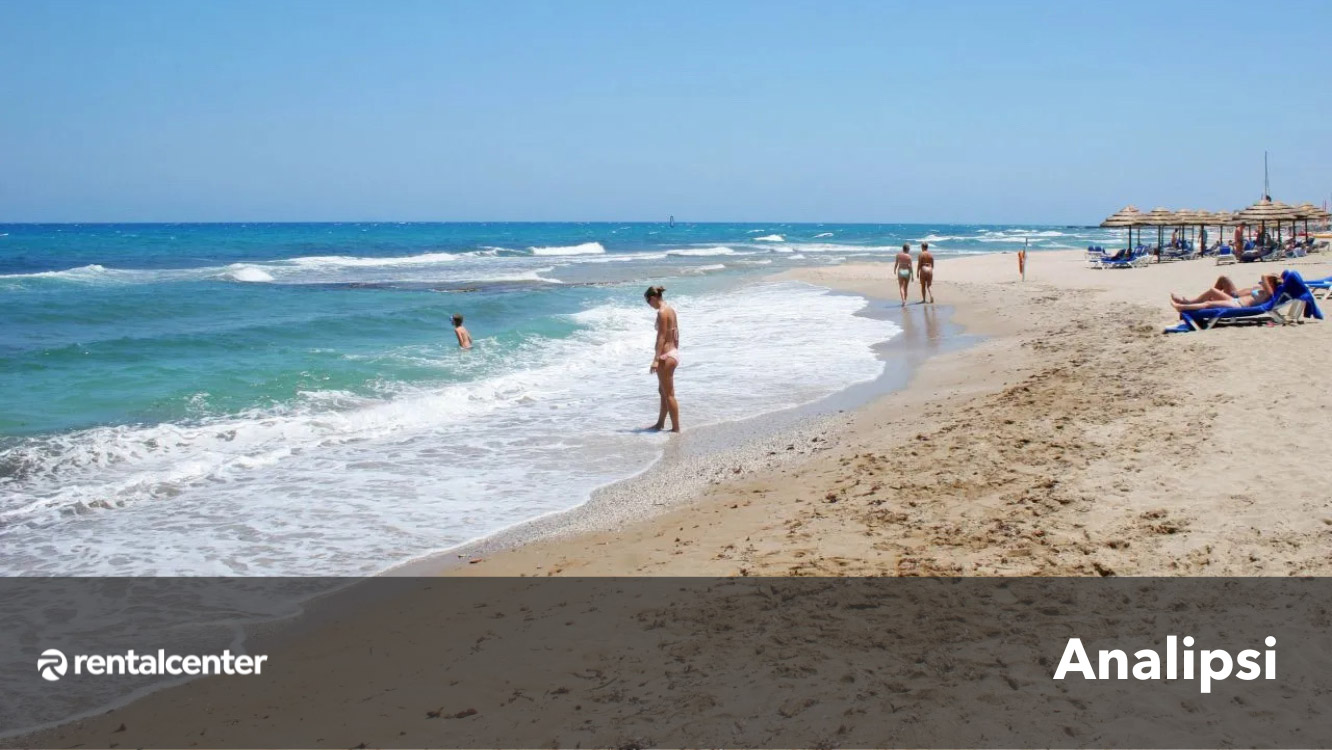
May 17, 2025
Analipsi Crete: All You Need to Know by Rental Center Crete Experts
 Analipsi is a village on the northern coast of Crete, 21 kilometres (13,05 miles) east of Heraklion, the capital city. It lies in a valley with olive groves near the popular tourist area stretching from Kato Gouves to Anissaras. The history of Analipsi dates back to the period of Ottoman rule in Crete in the 1800s when a small settlement called "Svourou" or "Svourou Metohi" existed in the area. Shepherds from the Lasithi Plateau region started moving to this warmer area during the winter months to feed their animals, and they began building basic stone houses, forming the village. A church dedicated to the Ascension of Christ was established in 1896, giving the village its current name, "Analipsi" (meaning Ascension in Greek). Read article
Analipsi is a village on the northern coast of Crete, 21 kilometres (13,05 miles) east of Heraklion, the capital city. It lies in a valley with olive groves near the popular tourist area stretching from Kato Gouves to Anissaras. The history of Analipsi dates back to the period of Ottoman rule in Crete in the 1800s when a small settlement called "Svourou" or "Svourou Metohi" existed in the area. Shepherds from the Lasithi Plateau region started moving to this warmer area during the winter months to feed their animals, and they began building basic stone houses, forming the village. A church dedicated to the Ascension of Christ was established in 1896, giving the village its current name, "Analipsi" (meaning Ascension in Greek). Read article

May 16, 2025
International Driving License: Do you need it to Rent a Car in Greece?
 Travelers planning to drive in Crete must understand Greece’s license requirements. An International Driving Permit (IDP) is mandatory for drivers from non-EU or non-EEA countries such as the United States, Canada, and Australia. This document must accompany a valid domestic license and serves as its official translation.Rental Center Crete accepts licenses written in the Latin alphabet without an IDP, but most agencies in Greece require one. Visitors can apply for an IDP through authorized agencies in their home countries, such as AAA in the United States, the Post Office in the UK, and the CAA in Canada. Read article
Travelers planning to drive in Crete must understand Greece’s license requirements. An International Driving Permit (IDP) is mandatory for drivers from non-EU or non-EEA countries such as the United States, Canada, and Australia. This document must accompany a valid domestic license and serves as its official translation.Rental Center Crete accepts licenses written in the Latin alphabet without an IDP, but most agencies in Greece require one. Visitors can apply for an IDP through authorized agencies in their home countries, such as AAA in the United States, the Post Office in the UK, and the CAA in Canada. Read article

May 16, 2025
What is the Average Cost of Renting a Car in Greece?
 The average cost of renting a car in Greece varies according to the vehicle type, rental term, season, and agency. Daily rates typically range between 18 € ($19.44, £15.47) and 49 € ($52.88, £42.10), with economy and compact cars offering the lowest prices. Longer rentals can lower daily costs to as little as 8 € ($8.64, £6.88) per day, especially during the off-season. March is the most cost-effective month, with the lowest rates across all vehicle categories. Some rental companies include hidden costs, but Rental Center Crete includes everything in the advertised price. This guide gives guests a comprehensive picture of how to budget for car rental throughout their stay in Greece. Read article
The average cost of renting a car in Greece varies according to the vehicle type, rental term, season, and agency. Daily rates typically range between 18 € ($19.44, £15.47) and 49 € ($52.88, £42.10), with economy and compact cars offering the lowest prices. Longer rentals can lower daily costs to as little as 8 € ($8.64, £6.88) per day, especially during the off-season. March is the most cost-effective month, with the lowest rates across all vehicle categories. Some rental companies include hidden costs, but Rental Center Crete includes everything in the advertised price. This guide gives guests a comprehensive picture of how to budget for car rental throughout their stay in Greece. Read article
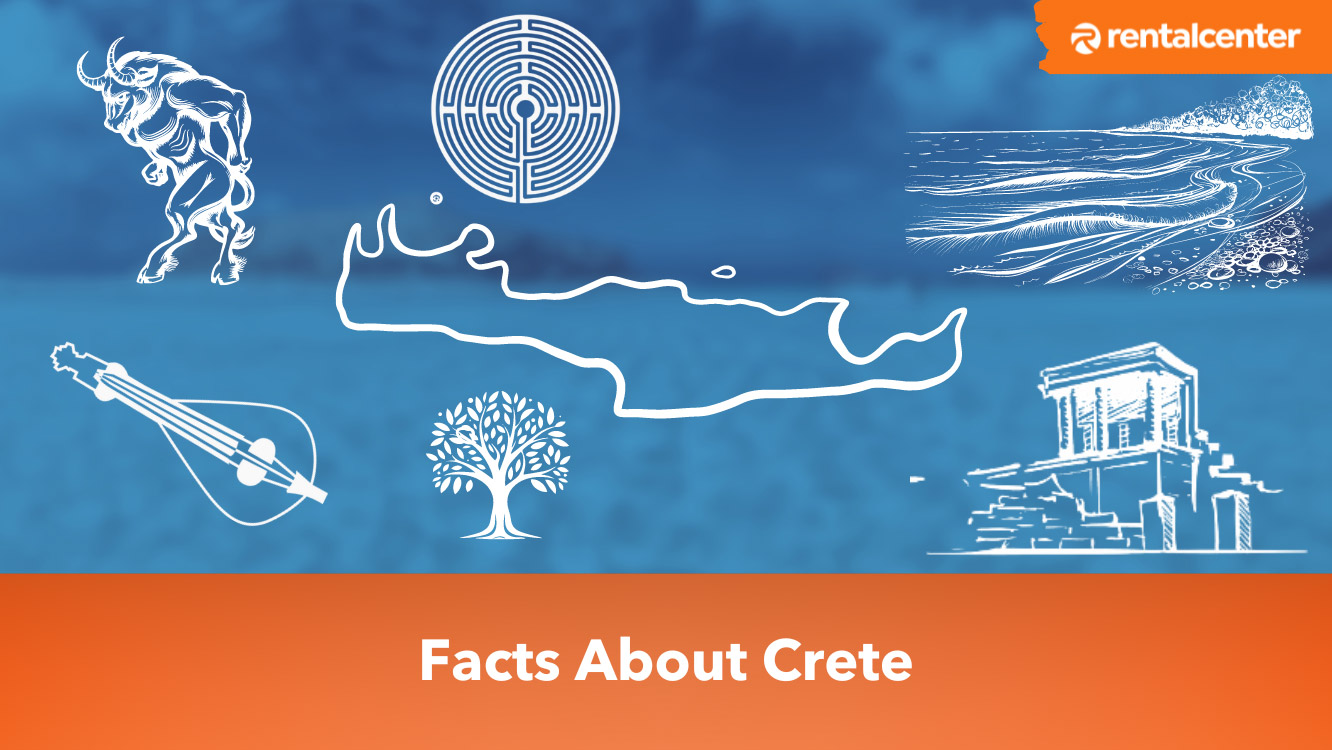
April 4, 2025
Fascinating Facts about Crete: Basic, Historical and Cultural Information
 If you're a traveler by soul and Crete is one of the many countries on your bucket list, then you're in for a huge treat. The island is among the best places to visit in the world, and you're certainly going to love it. So whether you're a solo traveler, a couple on your honeymoon, or with your family, Crete is a place you should all visit. Read article
If you're a traveler by soul and Crete is one of the many countries on your bucket list, then you're in for a huge treat. The island is among the best places to visit in the world, and you're certainly going to love it. So whether you're a solo traveler, a couple on your honeymoon, or with your family, Crete is a place you should all visit. Read article

April 4, 2025
Is Crete Expensive? A Guide to Prices in Crete in 2025
 For many years, the idea of a Crete holiday was only on the radar for those seeking a trip to an all-inclusive resort. Its ideal southern Greece location means great weather and over 2000 hours of sunshine every year. Travellers were ready to pay a lot to enjoy the Crete's atmosphere without having to sacrifice any of the comforts of home. It was not easy to visit Crete on a budget and has many people asking the question: Is Crete expensive? Read article
For many years, the idea of a Crete holiday was only on the radar for those seeking a trip to an all-inclusive resort. Its ideal southern Greece location means great weather and over 2000 hours of sunshine every year. Travellers were ready to pay a lot to enjoy the Crete's atmosphere without having to sacrifice any of the comforts of home. It was not easy to visit Crete on a budget and has many people asking the question: Is Crete expensive? Read article
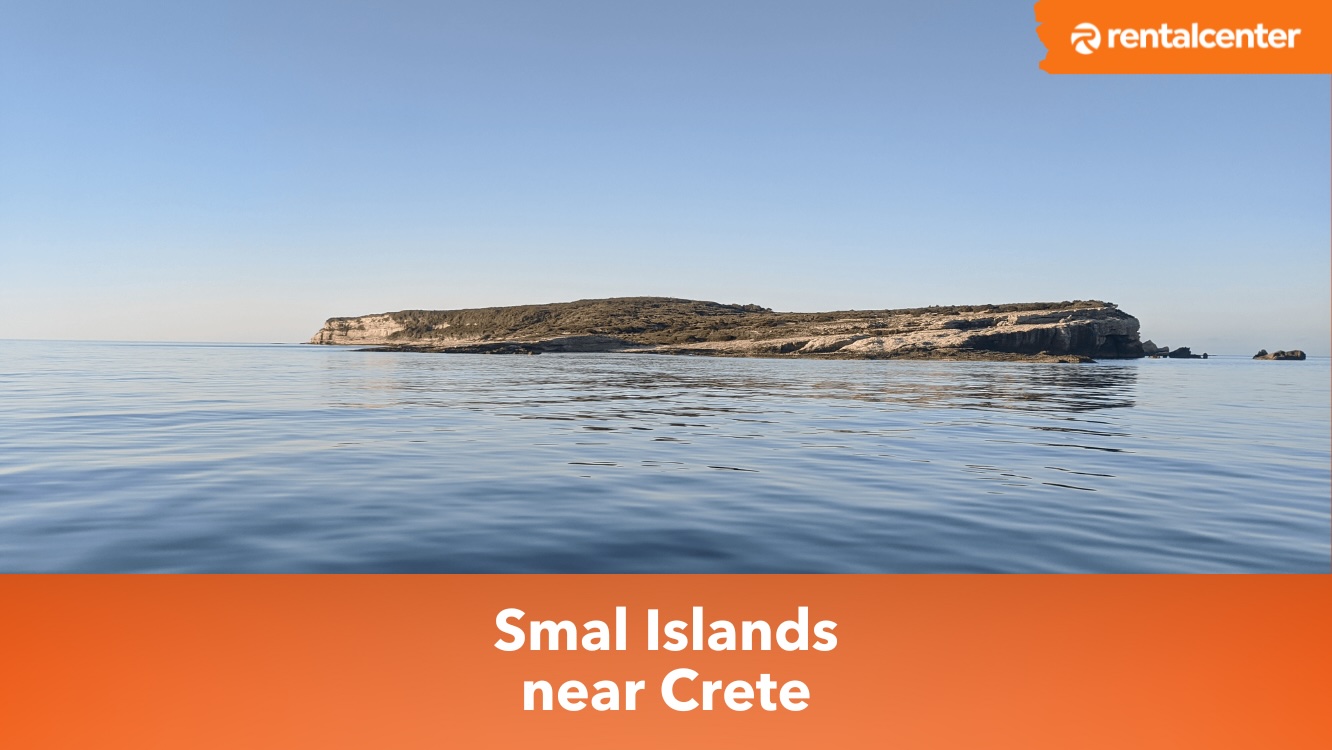
March 1, 2025
12 Small Islands to Visit Around Crete
 Crete acts as an ideal hub for exploring nearby islands and destinations. Several islands near Crete boast unspoiled beaches, rocky coastlines, and biodiversity, making them perfect for nature lovers. These islands provide opportunities for snorkeling, hiking, and peaceful relaxation in pristine settings. Many of these areas are protected under Natura 2000 programs, preserving their ecological importance and ensuring a unique experience for visitors seeking natural beauty. Read article
Crete acts as an ideal hub for exploring nearby islands and destinations. Several islands near Crete boast unspoiled beaches, rocky coastlines, and biodiversity, making them perfect for nature lovers. These islands provide opportunities for snorkeling, hiking, and peaceful relaxation in pristine settings. Many of these areas are protected under Natura 2000 programs, preserving their ecological importance and ensuring a unique experience for visitors seeking natural beauty. Read article

February 21, 2025
Oldest and Best Taverns in Crete
 Crete hosts some of the oldest taverns, offering authentic Cretan cuisine and modern culinary techniques. The best tavernas in Crete emphasize traditional flavors, exceptional hospitality, and accessibility to diverse dietary needs. Avli Restaurant blends architecture, innovative dishes, and an extensive wine selection. Tavern of Dounias in Drakona specializes in slow food and wood-fired traditional meals with mountain views. Kritamon Restaurant in Archanes highlights traditional recipes, while Kapsaliana Village Hotel Restaurant offers refined dining in olive groves. Many of these tavernas accommodate vegan, vegetarian, and gluten-free diets. Reservations are often essential due to their popularity. Read article
Crete hosts some of the oldest taverns, offering authentic Cretan cuisine and modern culinary techniques. The best tavernas in Crete emphasize traditional flavors, exceptional hospitality, and accessibility to diverse dietary needs. Avli Restaurant blends architecture, innovative dishes, and an extensive wine selection. Tavern of Dounias in Drakona specializes in slow food and wood-fired traditional meals with mountain views. Kritamon Restaurant in Archanes highlights traditional recipes, while Kapsaliana Village Hotel Restaurant offers refined dining in olive groves. Many of these tavernas accommodate vegan, vegetarian, and gluten-free diets. Reservations are often essential due to their popularity. Read article

February 21, 2025
The Battle of Crete: Facts, Combatants, Resistance, Casualties & Memorials
 The Battle of Crete, a pivotal chapter in World War II, encapsulates the courage and resilience of Allied forces, Cretan civilians, and German paratroopers. The conflict, often referred to as the "Battle for Crete," unfolded between May 20 and June 1, 1941, beginning with Germany's airborne invasion at Maleme airfield. This marked the first large-scale use of paratroopers in combat, a tactic that caused significant casualties on both sides. German forces secured the island, despite fierce resistance from Crete's defenders, including the Allied CreForce and local civilians wielding improvised weapons. The intense fighting delayed Germany's broader war plans, including Operation Barbarossa, impacting the strategic timeline of World War II. Today, the legacy of the "Cretan Battle" lives on through various memorials and events honoring those who fought, making Crete history a continuing testament to the bravery displayed during this critical encounter. Read article
The Battle of Crete, a pivotal chapter in World War II, encapsulates the courage and resilience of Allied forces, Cretan civilians, and German paratroopers. The conflict, often referred to as the "Battle for Crete," unfolded between May 20 and June 1, 1941, beginning with Germany's airborne invasion at Maleme airfield. This marked the first large-scale use of paratroopers in combat, a tactic that caused significant casualties on both sides. German forces secured the island, despite fierce resistance from Crete's defenders, including the Allied CreForce and local civilians wielding improvised weapons. The intense fighting delayed Germany's broader war plans, including Operation Barbarossa, impacting the strategic timeline of World War II. Today, the legacy of the "Cretan Battle" lives on through various memorials and events honoring those who fought, making Crete history a continuing testament to the bravery displayed during this critical encounter. Read article

February 21, 2025
Driving Violations in Greece: Traffic, Parking and Speeding Tickets
 Parking fines in Greece can be settled through post offices, banks, e-banking, or Taxisnet, with a standard fine of €80, reduced by 50% if paid within 10 days. Non-payment may result in license plate removal, blacklisting, visa complications, or imprisonment. Read article
Parking fines in Greece can be settled through post offices, banks, e-banking, or Taxisnet, with a standard fine of €80, reduced by 50% if paid within 10 days. Non-payment may result in license plate removal, blacklisting, visa complications, or imprisonment. Read article

February 18, 2025
Is Crete Gay friendly? Discover Crete’s LGBTQ social attitude!
 Crete is a welcoming and gay-friendly destination that combines its history, landscapes, and inclusive culture, offering an unforgettable experience for LGBTQ travelers. Crete has an open-minded atmosphere that is reflected in its warm hospitality, LGBTQ+ scene, and diverse offerings across cities like Heraklion and Chania. Read article
Crete is a welcoming and gay-friendly destination that combines its history, landscapes, and inclusive culture, offering an unforgettable experience for LGBTQ travelers. Crete has an open-minded atmosphere that is reflected in its warm hospitality, LGBTQ+ scene, and diverse offerings across cities like Heraklion and Chania. Read article
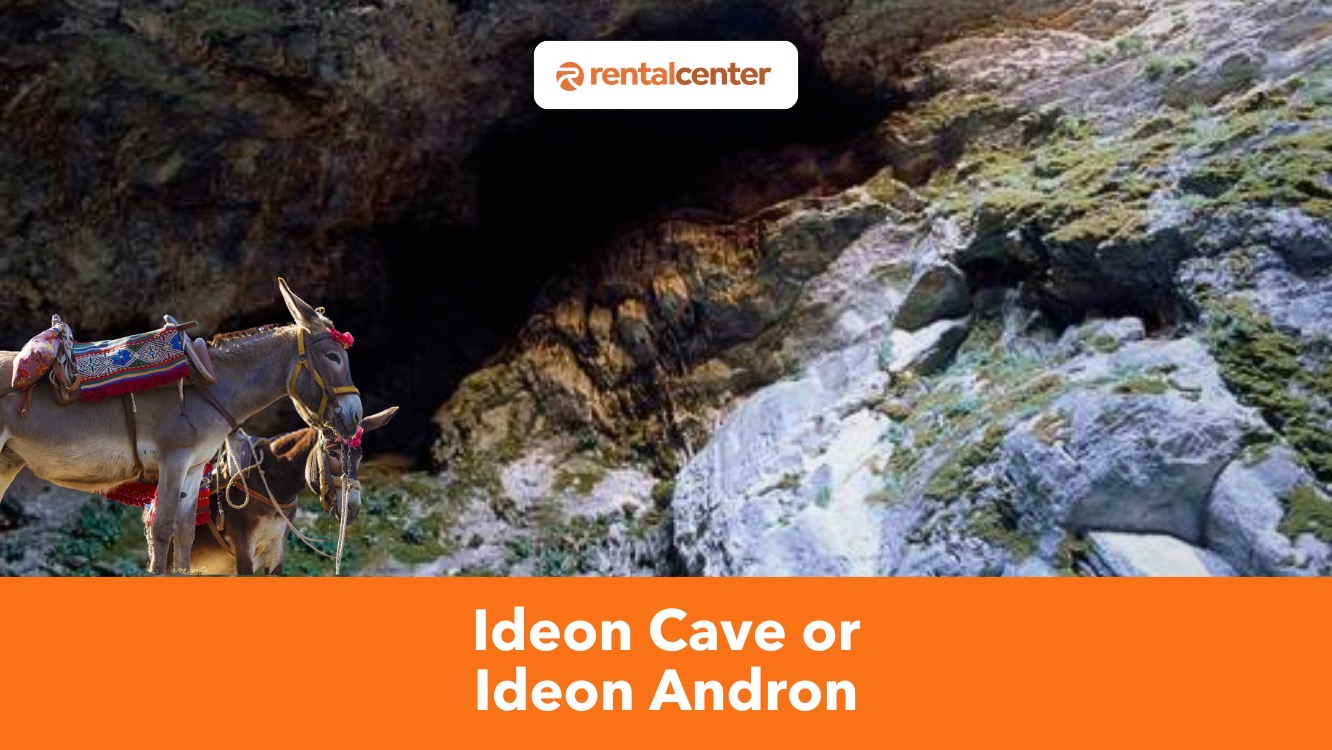
February 18, 2025
Ideon Cave (Idaean): All you need to know by Locals!
 The Ideon Cave (Ideon Andron), also called the Idaean Cave, Idaion Antron, or Cave of Ida, is a historical and mythological site located on the Psiloritis Mountain (Nida), the tallest mountain in Crete, Greece. Locals sometimes refer to it as Spiliara tis Voskopoulas (Cave of the Shepherdess) or Arkession Andron (Cave of Aid). Read article
The Ideon Cave (Ideon Andron), also called the Idaean Cave, Idaion Antron, or Cave of Ida, is a historical and mythological site located on the Psiloritis Mountain (Nida), the tallest mountain in Crete, Greece. Locals sometimes refer to it as Spiliara tis Voskopoulas (Cave of the Shepherdess) or Arkession Andron (Cave of Aid). Read article

February 5, 2025
Birdwatching in Crete: 10 Important Sites and Birds of Prey
 Crete, the largest Greek island, is a premier destination for birdwatching lovers. It offers a wide range of habitats, from gorges to wetlands. As part of the EU Natura 2000 network, the island benefits from active conservation efforts that preserve its ecosystems and protect its biodiversity. The topography of Crete is home to birds of prey that define the natural heritage. Griffon Vultures (Gyps fulvus) and Golden Eagles (Aquila chrysaetos) command high-altitude regions like the White Mountains (Chania) and Psiloritis (Heraklion). Bonelli’s Eagles (Aquila fasciata) and Peregrine Falcons (Falco peregrinus) bring speed and precision. During peak migration seasons in spring (March) and autumn (September–November), temperatures range from 15 ℃ (59 ℉) to 25 ℃ (77 ℉), creating ideal conditions for birdwatching lovers to explore the natural wonders. Read article
Crete, the largest Greek island, is a premier destination for birdwatching lovers. It offers a wide range of habitats, from gorges to wetlands. As part of the EU Natura 2000 network, the island benefits from active conservation efforts that preserve its ecosystems and protect its biodiversity. The topography of Crete is home to birds of prey that define the natural heritage. Griffon Vultures (Gyps fulvus) and Golden Eagles (Aquila chrysaetos) command high-altitude regions like the White Mountains (Chania) and Psiloritis (Heraklion). Bonelli’s Eagles (Aquila fasciata) and Peregrine Falcons (Falco peregrinus) bring speed and precision. During peak migration seasons in spring (March) and autumn (September–November), temperatures range from 15 ℃ (59 ℉) to 25 ℃ (77 ℉), creating ideal conditions for birdwatching lovers to explore the natural wonders. Read article

January 29, 2025
Crete Boat Trips: Hersonissos, Balos, Spinalonga and Santorini
 Crete provides diverse activities in Hersonissos, Balos, Spinalonga, and Santorini. Private boat rentals range from €50 ($54.40, £44) for motorboats to €1,500 ($1,630, £1,323) for yachts with skippers. Popular day trips include Knossos Palace, Heraklion City tours, and Samaria Gorge hikes, costing €35 ($38.10, £30.80) to €50 ($54.40, £44) per person. Crete is accessible by ferries from Athens and nearby islands, with tickets starting at €36 ($39.20, £31.70). Snorkeling and paddleboarding are favored at Elafonissi Beach and Agia Pelagia. Combo packages for car rentals and boat trips are available, with reliable services like Rental Center Crete. Read article
Crete provides diverse activities in Hersonissos, Balos, Spinalonga, and Santorini. Private boat rentals range from €50 ($54.40, £44) for motorboats to €1,500 ($1,630, £1,323) for yachts with skippers. Popular day trips include Knossos Palace, Heraklion City tours, and Samaria Gorge hikes, costing €35 ($38.10, £30.80) to €50 ($54.40, £44) per person. Crete is accessible by ferries from Athens and nearby islands, with tickets starting at €36 ($39.20, £31.70). Snorkeling and paddleboarding are favored at Elafonissi Beach and Agia Pelagia. Combo packages for car rentals and boat trips are available, with reliable services like Rental Center Crete. Read article
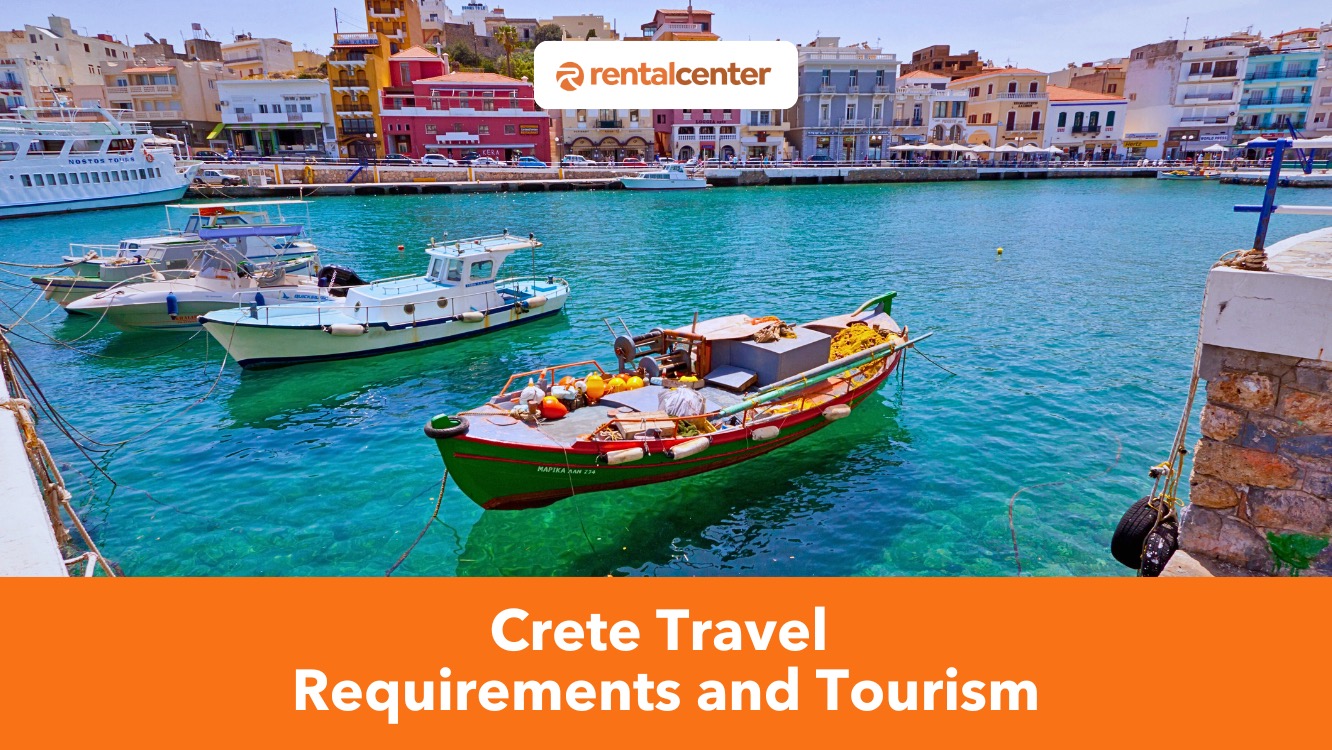
January 13, 2025
Crete Travel Requirements and Tourism
 Traveling to Crete involves adherence to specific entry requirements influenced by Greece’s national regulations and international standards. These requirements are determined by factors such as nationality, travel purpose, and current global conditions. As a major destination, Crete’s travel protocols aim to ensure smooth and secure entry for visitors while accommodating a wide range of travelers. Read article
Traveling to Crete involves adherence to specific entry requirements influenced by Greece’s national regulations and international standards. These requirements are determined by factors such as nationality, travel purpose, and current global conditions. As a major destination, Crete’s travel protocols aim to ensure smooth and secure entry for visitors while accommodating a wide range of travelers. Read article

January 8, 2025
Crete: Economy, Politics and Administration
 Crete's economy combines tradition and modernity, shaped by its natural resources, location, and cultural heritage. The island’s landscape supports agriculture, tourism, and trade, establishing Crete as a commercial hub. Its economy balances historical traditions with evolving industries, demonstrating resilience and adaptability. Resources and cultural identity drive growth, showing how sustainable development arises from local strengths in a changing global context. Read article
Crete's economy combines tradition and modernity, shaped by its natural resources, location, and cultural heritage. The island’s landscape supports agriculture, tourism, and trade, establishing Crete as a commercial hub. Its economy balances historical traditions with evolving industries, demonstrating resilience and adaptability. Resources and cultural identity drive growth, showing how sustainable development arises from local strengths in a changing global context. Read article
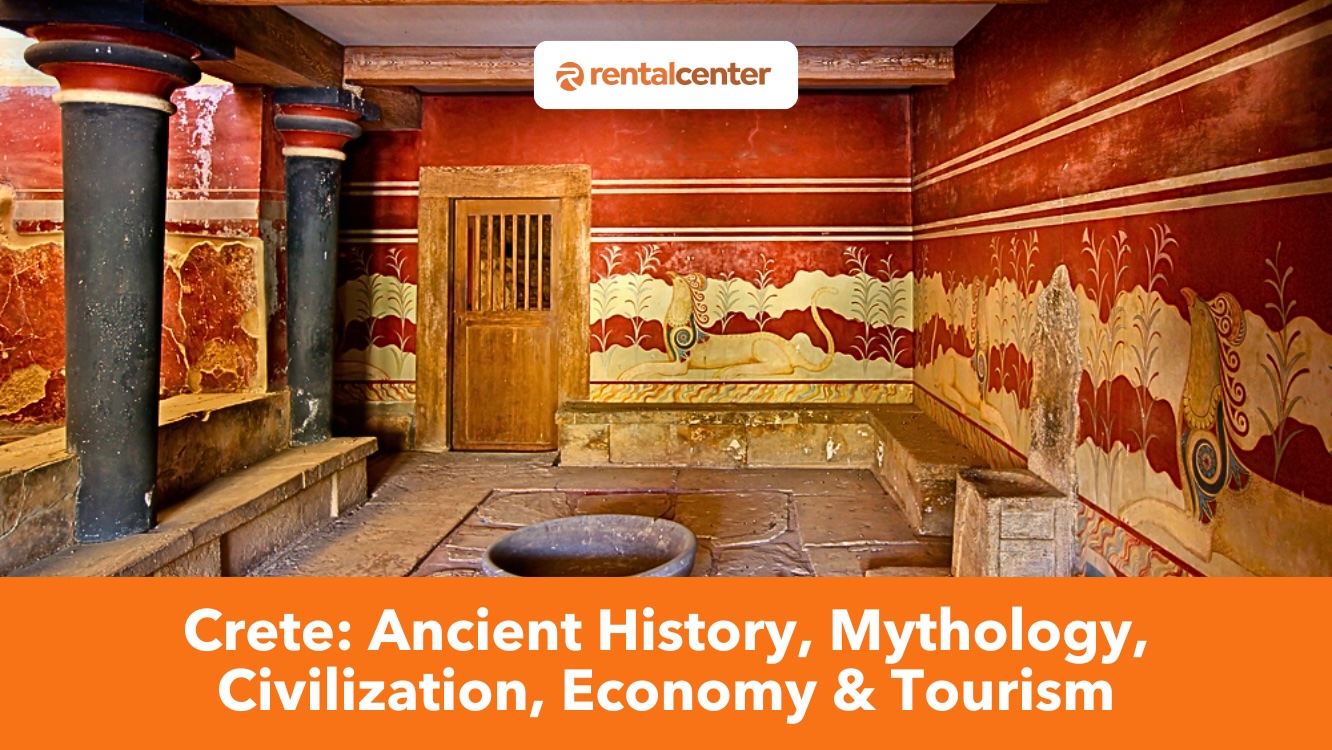
January 7, 2025
Crete: Ancient History, Mythology, Civilization, Economy and Tourism
 Crete is the most populated and largest among the islands of Greece. It has an area of 8,336 sq mi. It is located about 160 km south of the Greek mainland. And about 100 km southwest of Anatolia. Crete’s capital and largest city are Heraklion. During the Palaeolithic age, humans have inhabited the island since at least 130,000 years ago. Crete was the cradle of Europe’s first civilisation. Read article
Crete is the most populated and largest among the islands of Greece. It has an area of 8,336 sq mi. It is located about 160 km south of the Greek mainland. And about 100 km southwest of Anatolia. Crete’s capital and largest city are Heraklion. During the Palaeolithic age, humans have inhabited the island since at least 130,000 years ago. Crete was the cradle of Europe’s first civilisation. Read article
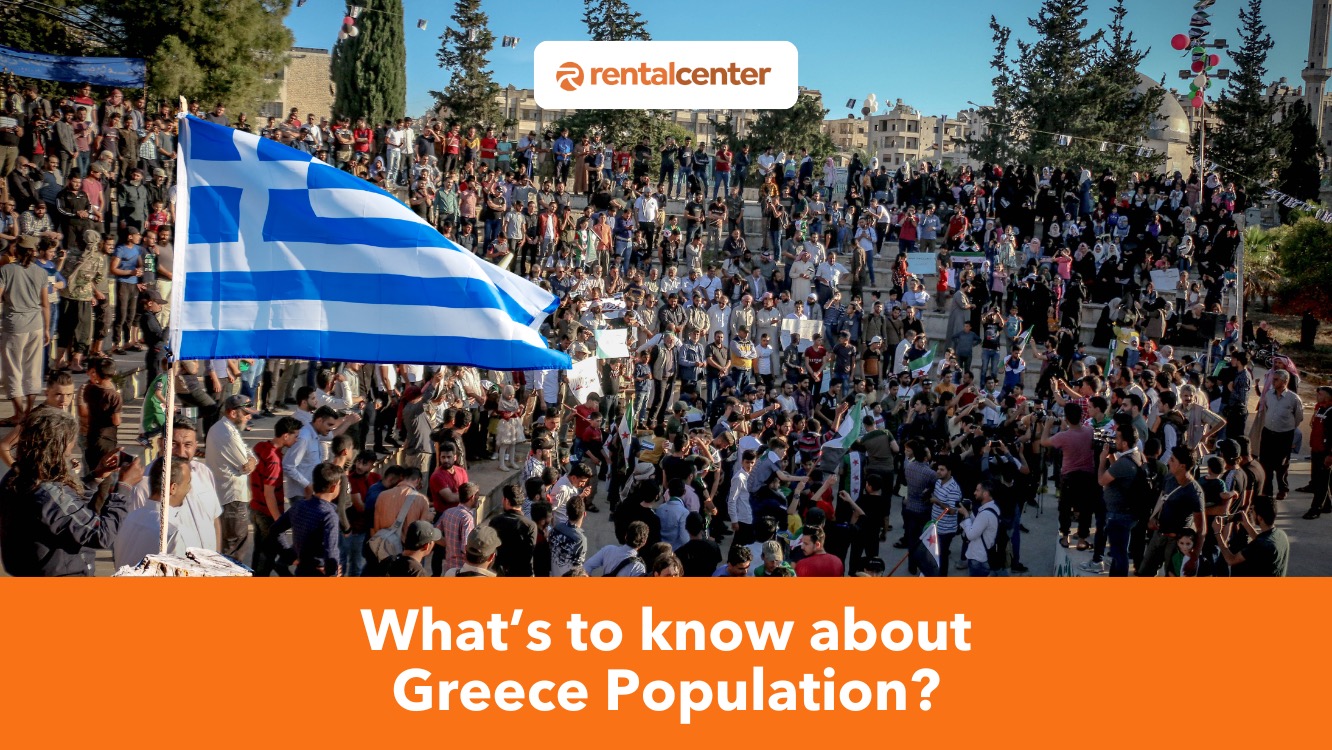
January 7, 2025
What to Know about Greece Population?
 The Greek population reflects historical and cultural heritage shaped by centuries of tradition, migration, and societal development. The demographic distribution varies across urban centers, rural areas, and islands, contributing to the country’s diverse social and cultural landscape. Population trends in Greece are influenced by factors such as economic conditions, regional development, and migration patterns. The Greek population offers insights into the nation’s cultural fabric, societal structure, and the dynamics shaping its modern identity. Read article
The Greek population reflects historical and cultural heritage shaped by centuries of tradition, migration, and societal development. The demographic distribution varies across urban centers, rural areas, and islands, contributing to the country’s diverse social and cultural landscape. Population trends in Greece are influenced by factors such as economic conditions, regional development, and migration patterns. The Greek population offers insights into the nation’s cultural fabric, societal structure, and the dynamics shaping its modern identity. Read article
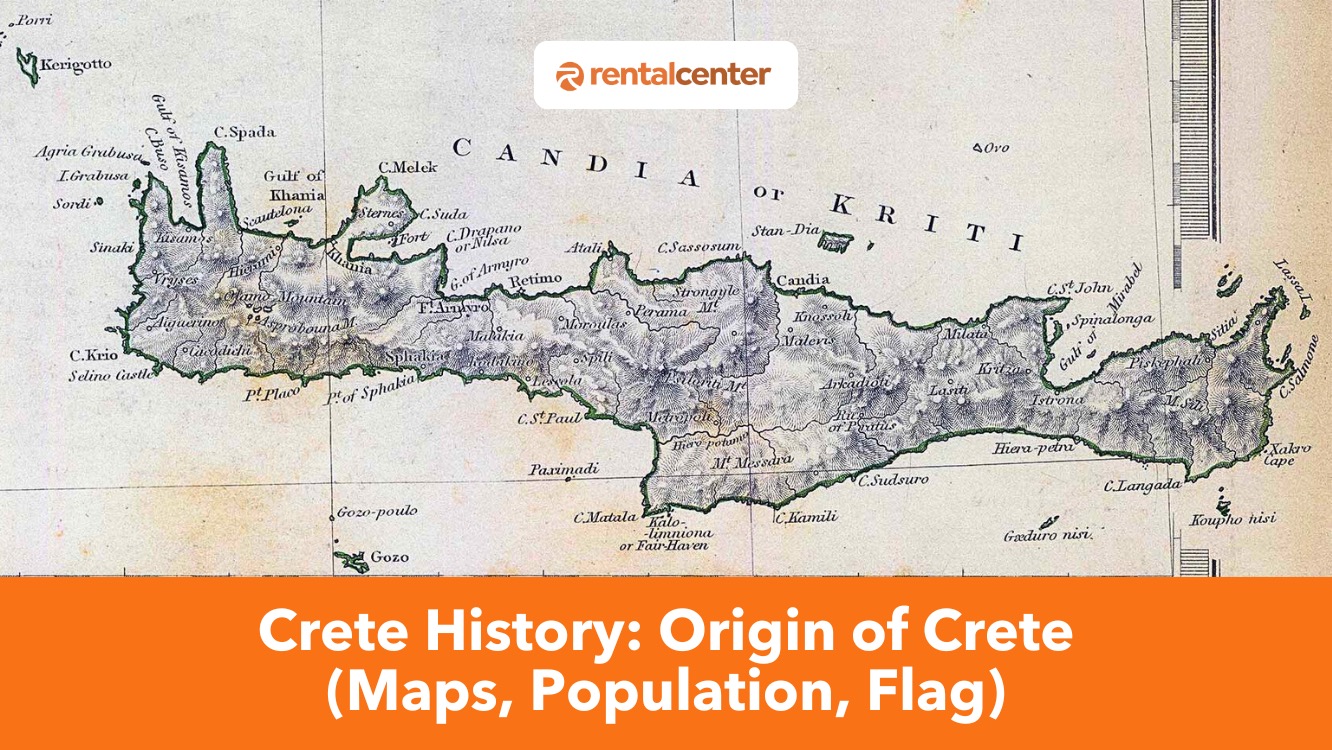
January 7, 2025
Crete History: Origin of Crete (Maps, Population, Flag)
 Crete, Europe’s oldest continuously inhabited island, evolved from Neolithic communities into the advanced Minoan civilization, famous for its monumental palaces and maritime influence, before undergoing Mycenaean invasions and later incorporation into Roman, Byzantine, Arab, Venetian, and Ottoman domains. Following prolonged foreign rule and frequent uprisings, it attained autonomy as the Cretan State in 1898 and officially unified with Greece in 1913. The Mediterranean island preserves its distinct cultural identity through its dialect, music, dance, cuisine, and religious traditions. Its strategic geographical position, historical layers, and archaeological heritage continue to shape its cultural and economic significance. Read article
Crete, Europe’s oldest continuously inhabited island, evolved from Neolithic communities into the advanced Minoan civilization, famous for its monumental palaces and maritime influence, before undergoing Mycenaean invasions and later incorporation into Roman, Byzantine, Arab, Venetian, and Ottoman domains. Following prolonged foreign rule and frequent uprisings, it attained autonomy as the Cretan State in 1898 and officially unified with Greece in 1913. The Mediterranean island preserves its distinct cultural identity through its dialect, music, dance, cuisine, and religious traditions. Its strategic geographical position, historical layers, and archaeological heritage continue to shape its cultural and economic significance. Read article












